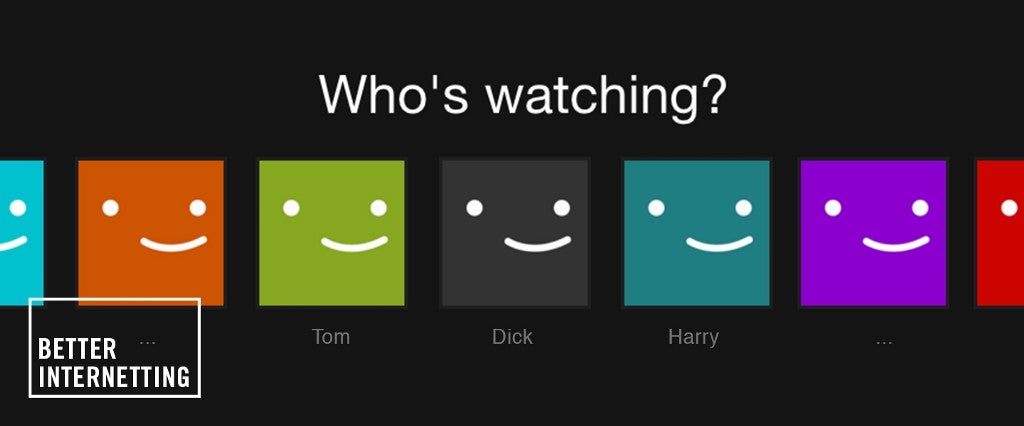I’ve already explained how to handle the separating of accounts when you break up with someone you’re dating, but what about the beautiful symbiosis that occurs when everything between you and your account partner is going great? Your buddy gets the coveted $11.99/month commercial-free Hulu through work and they give you their password. Your brother has had his Netflix account forever, and he doesn’t care if you create your own user profile. Or, the most decadent share of all: You somehow find yourself with a friend’s parents’ cable login.
In all these cases it’s important to seize the opportunity and stream as much video as your little heart can take, but there’s also the matter of not being a parasite. Below, some guidance on how to tread that fine line.
Passwords are VIP, not general admission
The flowchart of this password’s journey should not fork 30 times after it falls into your hands. If you know who the account holder is, and they’ve told you it’s fine to share the login info, then it’s obviously okay to pass it on to another buddy in need. But if this is a password you’ve inherited third- or fourth-hand and you don’t know its origin story, keeping the login info to yourself is the most humane thing to do. You’re already a plus-one. You don’t even know if the account owner wants you around, let alone anyone else. One share can quickly lead to another, and some of these accounts do have limits. Don’t get locked out!

Respect the algorithm
Services like Netflix let you register separate users to keep everyone’s watch lists and recommendations pure, so if that option is available to you, take advantage of it. For less sharing-oriented streaming options like Amazon Video, you’re probably out of luck—and as tempting as it might be to stock your friend’s queue with cerebral crime documentaries and give every 420-friendly animated series an automatic five-star rating, it’s important to remember you’re a guest in this feed. If there’s not a feature designed to help you keep your viewing habits out of their hair, at least do them the favor of not burying their content underneath yours.
You could try keeping a list of titles you want to check out in a listmaking app, or a spare doc somewhere. Or do what an old boyfriend and I once did: put the titles of things one of you has seen and the other one hasn’t onto little slips of paper, fold them, and keep them in a jar or box near your TV. Anytime you can’t agree on what to watch, take turns drawing a slip of paper out of the box*—it’s a fun game and an analog to-watch strategy.
It’s also completely possible that your friend doesn’t care about the algorithm! If they’re not one to use a queueing feature or they only watch old episodes of Seinfeld, maybe they won’t mind what kind of footprint you leave on their “Things you may like” bar. Just know what the deal is before you go bananas with their taste-based data.
Always yield to the account holder
If you’re in the middle of your fourth episode of The Sopranos and you get a notification from HBO Now letting you know that someone else is trying to use the account, defer to them. Either they were nice enough to share their password with you, or your mutual contact was sketchy enough to pass it on willy-nilly. No matter what, they get to bump you in line.
Cover any additional charges
While a lot of streaming services offer their libraries for a flat monthly rate, your Hulus and your Amazon Videos offer more recent (or deep cut) titles for an additional rental fee. So if you’re dying to watch 10 Cloverfield Lane right now, tonight, no exceptions, just shoot your buddy a text letting them know what the deal is. Then Venmo them the cost. Or, if that feels a little formal, Venmo them the $8 and let them know what it’s for the next time you see them.
*There is no time or mood where two people will be able to agree that watching Blackfish sounds tight.
